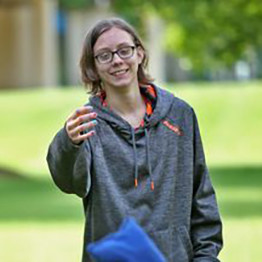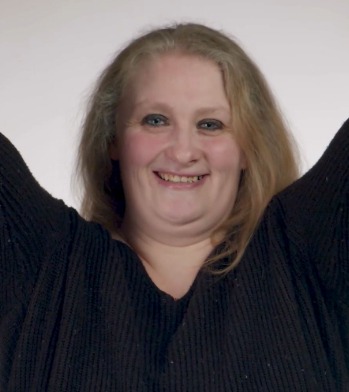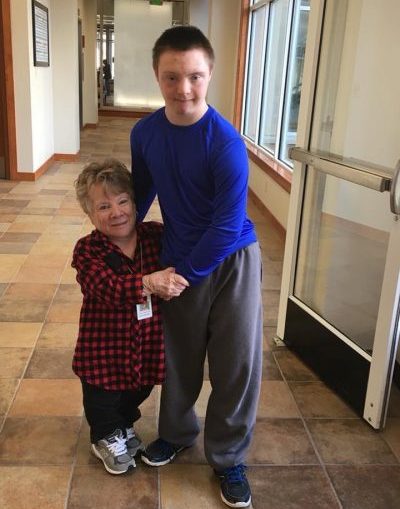Heidi Knoerzer is a Qualified Developmental Disability Professional currently working with Young Boys at Damar. She graduated from Indiana State University with a Bachelors Degree in Social Work. Having started her career with the Department of Child Services, she came to Damar in February of 2015. In January 2018, Heidi will be transitioning to work with Young Girls with Autism. Her passion is working with children and ensuring they have the best futures as possible.
Scarlet’s happy ending needs to be shared by others
3 minute read
A newspaper story changed Scarlet’s life. Now we need about 150 more stories just like that one – or, at least, more families willing to change the lives of kids like Scarlet.
In July, the Indianapolis Star did a story about Scarlet as a way to highlight the challenges facing children in the Indiana Adoption Program. An active 15-year-old, Scarlet was one of about 150 kids in the program at that time.

But she’s not in the program any more. As of shortly before Christmas, she’s – finally – in her “forever home,” with a family that read the Star story and is beginning the adoption process.
Scarlet’s had a long, frustrating journey to get to this point. She entered the foster care system when she was a toddler, and she was in the Indiana Adoption Program longer than any other child. During that time, she had about 35 foster-care placements, and about 1,000 other children were adopted through the program. But, for a range of reasons, Scarlet was never adopted. Most recently, she’s been living in a Damar Services group home.
Scarlet’s story highlights a lot of the challenges facing Indiana’s foster and adoption system. The state is in a foster care crisis, one of five states that account for nearly a third of all children in foster systems across the country. This crisis has been building for years, but the recent spike in opioid addictions has added to it, as parents become addicted and can no longer care for their kids.
Once a child like Scarlet becomes eligible for adoption, new challenges arise. First of all, children with developmental and intellectual disabilities can be hard to place. In addition, as children get older, it gets harder and harder to find families for them, as most prospective adoptive parents want to adopt younger children.
And then there’s the challenge of simply helping people get to know the children well enough to appreciate how special they are. To help parents find children, the Indiana Adoption Program puts together “SNAP” (Special Needs Adoption Program) books with pictures and information about the kids, and the Department of Child Services hosts events where prospective parents can meet children and see them playing and interacting with other kids.
Both organizations do a wonderful job with these books and events, but these kids have more to offer than can be described in a photo caption or learned from an event.
Scarlet is a great example. She’s been through a lot in her life, and she does have some developmental disabilities. Add to that the simple fact that she’s a teenager, with all the normal challenges of that age, and you’re going to have some behaviors. But you’re also going to have a beautiful, resilient, strong young woman who has a bright future ahead of her … a creative young woman with a twinkle in her eye, who never gave up hope no matter how long it took to find the family for her.
Of course, getting to know a young woman like Scarlet takes time. Fortunately, after the story ran in the Star, a family was moved to invest that time. In fact, a number of families showed an interest in helping Scarlet. In the days after the story ran, DCS got flooded with calls. The family that’s planning to adopt Scarlet is one that had shown an interest in her before. The story convinced them to get to know her better. And that’s all it took.
I don’t underestimate the decisions facing such families. To agree to be a foster parent is a giant commitment. You’re saying you’ll be available to take in a kiddo any time of day or night, and you never know who you’ll be getting or what the child has been through. Add to that the fact that the process can be intimidating and overwhelming, and you can understand why some families don’t make it past the first inquiry.
But my appeal to families considering adoption is that they push through the intimidation. Fight through any barriers in your path to being a foster parent or adopting. And if you do run into something you can’t figure out or fight through, call Damar. We’ll help. We want what’s best for the children we serve, so we’re going to do all we can to make sure they are successful in every setting.
Why? Because there are more boys and girls like Scarlet who are out there waiting for their “forever home” … kids you haven’t met yet who are waiting to be loved and cared for, to be a part of a family, to feel wanted and appreciated for who they are and who they are going to be. And we can’t get stories in the papers about every one of them.





